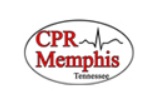Microbiology Unknown Lab Report | Bacillus subtilis
Call Us Now
Get the Best CPR Class in Memphis Today!
UNKNOWN LAB REPORT (Bacillus subtilis)
Josie Behr
Microbiology Lab Report for Unknown Bacteria
Spring 2013
INTRODUCTION:
Call Us Now
Get the Best CPR Class in Memphis Today!
Microorganisms make up not only sixty percent of the earth’s biomass, but also generate over half of the oxygen one breaths each day (Fascinating Facts). Since the earth is made up of mostly microorganisms it is extremely important to know exactly what their purpose is and how they either harm or help the earth’s atmosphere each day. Microorganisms have a large spectrum of roles ranging from preserving foods to creating a pathogenic bacterium. Using the knowledge and techniques learned in microbiology laboratory class allowed the unknown of the study to be successfully identified.
MATERIALS AND METHODS
The unknown number 111 containing both a gram positive and gram negative bacteria was given out by Professor Snaric on March 26, 2013. Using the proper methods learned throughout the microbiology laboratory class, the process of separating the unknown began. The first step performed was growing the unknown on a Nutrient Agar plate in hopes of successfully separating the two bacteria. This was done by sterilizing an inoculating loop with a Bunsen burner and following the quadrant streak method. This procedure was then followed by incubating the Nutrient Agar plate for two days. After two days of incubation there were isolated colonies of two different bacteria. After isolating the two colonies, the inoculation of 2 Nutrient Agar plates were repeated in order to completely grow one plate with one bacterium and one with the second bacterium. Isolations might not always be successful and will have to be repeated. In the case of the unknown number 111 the isolation took over five tries. After proper and complete isolation of the bacteria a gram stain was performed by taking a sample from both (NA) plates Unknown A and Unknown B. The gram stain procedure was performed by properly following the instructions in the microbiology laboratory manual by McDonald (McDonald, Thoele, Salsgiver, and Gero). The gram stain for the Unknown A bacterium showed results for gram positive rods. The gram stain for the Unknown B was successful and showed perfect gram negative rods. Completion of successful gram staining was followed by a variety of biochemical tests that were chosen from the identification tables handed out by Professor Snaric. Since the Unknown A bacterium was gram positive rods a Methyl Red Test was then done to see if the bacterium produced acid from glucose metabolism. The Methyl Red Test was then followed by a Casein Test to see if the enzyme casease was produced. Considering that the Unknown B bacterium was gram negative rods, a Urea Test was performed first to see if the enzyme urease was produced. This test was then followed by a Casein Test to see if casease was produced. After these tests were complete a Nitrate Test and Simmons Citrate Test were both done to see if the organism was capable of reducing nitrate to nitrite and if citrate was used as the sole carbon source. The biochemical tests that were performed on both the gram positive and gram negative unknowns were tests that were practiced throughout the year in the microbiology laboratory manual by McDonald.
The following tests were performed on the gram positive bacteria Unknown A:
- Methyl Red
- Casein
See Table 1 for results.
The following tests were performed on the gram negative bacteria Unknown B:
- Urea
- Casein
- Nitrate
- Simmons Citrate
See Table 2 for results.
RESULTS:
The first test done on the Unknown A #111, gram positive rods, was a Methyl Red Test. This test turned out negative and the bacterium in Unknown A did not produce acid from glucose metabolism. This test was followed by a Casein Test which also turned out negative. The Milk Agar plate stayed white and no casease was produce. These test led to the identification of the Unknown A #111 gram positive bacteria (McDonald, Thoele, Salsgiver, and Gero).
TABLE 1: Bacteria Tests and Results for Unknown A
| TEST | PURPOSE | REAGENTS/MEDIA | OBSERVATIONS | RESULTS |
| Gram Stain | Determine if bacteria in unknown #111 was positive or negative | Crystal violet, Iodine, Alcohol, Safranin | Purple rods | Gram positive rods |
| Methyl Red | Determine if the bacteria produces acids from glucose metabolism | Methyl Red | After Methyl Red is added to broth, color changed from light yellow to a darker yellow | Negative |
| Casein Test | Determine if the enzyme casease is produced which hydrolyzes the protein casein | Milk Agar(white, opaque) | Milk Agar stayed the same, white and opaque | Negative, enzyme casease was not produced |
FLOWCHART
**Removed due to formatting issues
The first test performed on the Unknown B #111, gram negative rods bacterium was a Urea Test. The Urea test was positive for urease and the broth turned a redish pink color. This test was then followed by a Casein Test which showed negative results. The Milk Agar plate stayed white and casease was not produced. The Nitrate Test was then performed on the Unknown B and showed positive results for a nitrogenous reduction. Since the broth did not change colors when A & B reagents were added, Zinc was then added and the colored stayed the same. This showed that there was some form of nitrogenous reduction. The last test performed was a Simmons Citrate Test which had no color change and showed negative results for citrate being used as the bacteria’s sole carbon source. These test led to the identification of the Unknown B #111 bacteria (McDonald, Thoele, Salsgiver, and Gero).
TABLE 2: Bacteria Tests and Results for Unknown B
| TEST | PURPOSE | REAGENTS/MEDIA | OBSERVATIONS | RESULTS |
| Gram Stain | Determine if bacteria in unknown #111 was positive or negative | Crystal violet, Iodine, Alcohol, Safranin | Red rods | Gram negative rods |
| Urea Test | Determine if the enzyme urease is produced which hydrolyzes urea | Urea Broth (yellow) | Broth turned a pink/red color | Positive for enzyme urease |
| Casein Test | Determine if the enzyme casease is produced which hydrolyzes the protein casein | Milk Agar (white, opaque) | Milk Agar stayed the same, white and opaque | Negative, enzyme casease was not produced |
| Nitrate Test | Determined to see if organism is capable of reducing nitrate to nitrite, or other nitrogenous compounds | Reagents A & B added then Zinc added | No color change when A & B reagents were added, Zinc was then added and still no color change | Positive for a nitrogenous reduction. |
| Simmons Citrate | Determine if citrate is used as its sole carbon source. If citrate is used pyruvic acid and CO2 are produced | Citrate Agar Slants (green) | No color change, slant stayed green. | Negative |
DISCUSSION/CONCLUSION:
The Unknown #111 was a combination of two different bacteria. The Unknown consisted of one gram positive and one gram negative bacteria. The unknown in #111 identified as Unknown A was classified as gram positive rods. After close observation and multiple tests it was clear that the Unknown A bacteria could be identified as Bacillus subtilis. The test results lead to this identification because after a gram stain was done and it was possible to determine the shape of the bacterium as a rod, multiple bacteria were crossed off the list right away. The only two possible remaining bacteria were Bacillus cereus and Bacillus subtilis. The next two test performed, Casein and Methyl Red Test both showed negative results which in this case meant that the only bacterium it could possibly be was Bacillus subtilis because Bacillus cereus showed positive results for both tests. The identification of the Unknown A as Bacillus subtilis was correct.
Unknown B bacterium, gram negative rods, took multiple tests to identify and was a more intense process compared to Unknown A. After multiple tests, it was clear that the Unknown B bacterium was Proteus vulgaris. The test results lead to this identification by the process of elimination. The first test performed, the Urea Test turned out positive which right away eliminated three bacteria leaving only Proteus vulgaris and Klebsiella pneumoniae. The next two tests, Casein and Nitrate Test did not necessarily help in eliminating which bacterium Unknown B was. The two tests did not help in the process to eliminate any bacteria because the Casein Test turned out negative and both P. vulgaris and K. pneumoniae show negative results for this test. Like the Casein Test the Nitrate Test turned out positive and both bacteria P.vulgaris and K. pneumoniae show positive results for the Nitrate Test. It was not until the last test performed, the Simmons Citrate Test, that the Unknown B bacterium was possible for identification. The Simmons Citrate Test showed negative results which lead to the identification of Unknown B being Proteus vulgaris, because in order for the Unknown B to be K. pneumoniae the Simmons Citrate Test would have had to show positive results. After consulting with Professor Jay Snaric, it was confirmed that the Unknown B bacterium was Proteus vulgaris. During the process of identifying the Unknown #111 A and B bacteria there were not many problems that were encountered. The only major issue during the process was trying to get a complete isolation of both bacteria. Successfully separating the bacteria was a challenge because multiple (NA) plates kept becoming contaminated and not showing signs of isolation. After the isolation was complete there were no problems with identifying either of the two Unknown A & B bacteria.
Bacillus subtilis is a gram-positive rod-shaped bacterium that was first discovered in 1835 by Christian Gottfried. The bacterium was first known as Vibrio subtilis and then later was renamed Bacillus subtilis. This bacterium is usually found in soil and vegetation. B. subtilis develops in temperatures ranging from 25-35 degrees Celsius. “Stress and starvation are common in this environment; therefore, Bacillus subtilis has evolved a set of strategies that allow survival under these harsh conditions. One strategy, for example, is the formation of stress-resistant endospores”(Barich). Bacillus subtilis originally was considered an aerobic bacterium, meaning that oxygen was required for formation of the bacterium. Now it is considered to be a facultative aerobe meaning that it can survive with or without the presence of oxygen.
B. subtilis is one of the most studied gram-positive rod-shaped bacterium. This bacterium is studied often because of its unique ability to form endospores. During sporulation B. subtilis produces a variety of antibiotics. They include: polymyxin, difficidin, subtilin, and mycobacillin. “Bacillus subtilis supports plant growth. As a member of Bacillus, this bacterium often plays a role in replenishing soil nutrients by supplying the terrestrial carbon cycle and the nitrogen cycle”(Barich).
Luckily Bacillus subtilis is a non-pathogenic bacterium that is usually only used on plants. Although B.subtilis does reside in the soil it can contaminate the food one consumes but it usually does not result in food poisoning. B.subtilis is usually used as a fungicide on agricultural seeds which usually do not affect humans or animals. Because B. subtilis is a spore forming bacterium it is an extremely hard bacterium to get rid of and it can endure extreme conditions of heat and desiccation in the environment. B. subtilis is a very unique nutrient cycling bacterium that is studied often in labs (Bacillus subtilis Final Risk Assessment).
REFERENCES:
-
- Barich, Daniel, ed. “Bacillus Subtilis.” MicrobeWiki. N.p., n.d. Web. 29 Apr 2013. <http://microbewiki.kenyon.edu/index.php/Bacillus_subtilis>.
- “Bacillus subtilis Final Risk Assessment.” Biotechnology Program under the Toxic Substances Control Act. US Environmental Protection Agency, n.d. Web. 29 Apr 2013. <http://www.epa.gov/biotech_rule/pubs/fra/fra009.htm>.
- “Fascinating Facts.” Microbiology Online. Society for General Microbiology. Web. 29 Apr 2013. <http://www.microbiologyonline.org.uk/students/fascinating-facts>.
- McDonald, Virginia, Mary Thoele, Bill Salsgiver, and Susie Gero. Lab Manual for General Microbiology. St. Louis Community College at Meramec, 2011.
- Barich, Daniel, ed. “Bacillus Subtilis.” MicrobeWiki. N.p., n.d. Web. 29 Apr 2013. <http://microbewiki.kenyon.edu/index.php/Bacillus_subtilis>.









